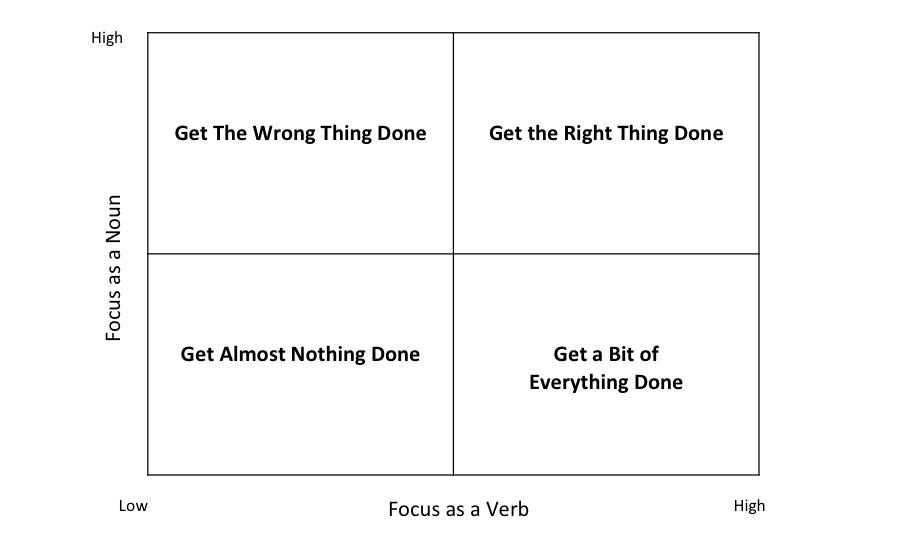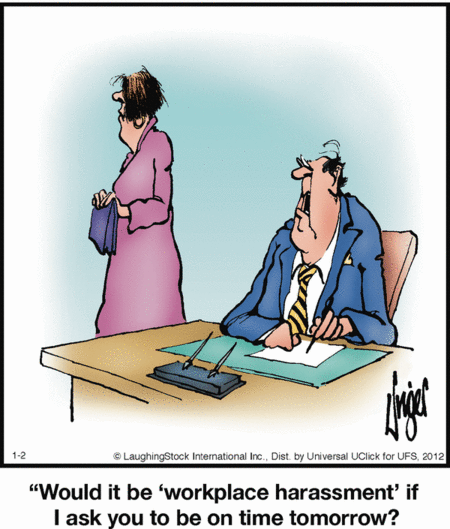Podcast: Play in new window | Download ()
Subscribe: Apple Podcasts | Spotify | | More

See that blur? You may be that blur. Scurrying around frantically trying to get things done.
When somebody shouts, “Hey, what are you workin’ on?” You stop momentarily. You think about it and realize you don’t know what you’re working on. You just know you’re going as fast as you can.
Today’s show is a composite story. A true story…mostly. It may be your story. It may be the story of somebody you love. It’s a story that happens daily around the world as business owners struggle to gain footing toward success. Some find it. Others slip below the water line and drown under the pressures. The goal is to learn, apply these things to our own situation and try to make the coming days more productive and profitable. It’s fundamentally about two things that may seem almost the same, but yet they’re very different: doing the wrong work and doing the work wrong.
Your little boy hands you a battery operated toy. The battery compartment is secured with a small screw that requires a flat-head screwdriver. A small flat-head screwdriver. You scrounge around for one that will fit. Most are too big. Others are too fat. You try a small Phillips-head screwdriver by awkwardly using just one little side of it. A dime won’t work either. Frustrated that you don’t have the right tool for the job, you begin to look around at anything that might work. Like a knife. Or a letter opener.
I’ve encountered too many people who approach running their business just like that. Doing the wrong work and doing the work wrong.
Let’s consider a solopreneur, a person in one of the many professional services industries. You can easily apply this to your situation because the problems we face in business are mostly common. We need customers who will pay us an amount that affords us the ability to sustain our business. We need customers who are happy with doing business with us so they don’t ask for their money back, and so they’ll tell others good things about us. We need our business to be predictably successful so we don’t lose our minds and our lives along the way. We need our business to fuel our life, not drain it. That’s true whether you’re a dentist or a dressmaker.
We’re going to call our case study business owner, Ted. Ted is a capable and competent presenter in the education space. He speaks to school faculties mostly. Ted was once a principal of an elementary school. He wrote a book about classroom management, was asked to give a presentation a few years ago and really enjoyed it. He accepted a job as a middle school assistant principal because he wanted to see if he could make speaking and training a full-time career. So Ted is in transition.
This all began about five years ago when Ted was sitting in a professional development meeting one day listening to a man speak. One of the topics the speaker covered was classroom management, but Ted thought he had some better ideas. He found the speaker compelling, but he didn’t think the tactics were very real world, not based on his experiences. Ted had been a 4th grade teacher for four years before becoming an assistant principal. Within 2 years the district had given him his own school, promoting him to principal. He’d been tasked with helping find suitable people to address the faculty on professional development days for a few years now. He found himself struggling at times to find people with a message he felt could really help his staff. Listening to this man speak on classroom management just seemed to flip some switch inside Ted’s head causing him to think, “I should write a book. I could do what he’s doing.”
That was five years ago. Since that time, Ted did write the book. He self-published it using Amazon’s CreateSpace publish-on-demand services. He got some English teachers at the nearby high school to help him edit it. He paid a college kid some money to design a jacket for the book. He even registered the domain name for the book’s title. So far, so good. He hadn’t spent any significant money really. So far, his biggest investment was the time he had to spend not doing the typical weekend family stuff he would have done. But it was okay, his wife and small children seemed to handle it well. And Ted made sure he didn’t string together too many busy nights or weekends in a row.
Ted is known around the educational circles where he works. He’s even made some friends in other parts of the state. So it wasn’t surprising he got calls to present even before he finished the book. The money wasn’t big, but he was grateful to be in front of people teaching the things he had learned about managing elementary classrooms. He had the perspective of a teacher and an administrator. And now, he also had the perspective of a parent.
Once the book was written – and it took much longer than he expected – he and his wife decided they’d invest a little bit of money into printing some hard copies to have so Ted could take them with him to his presentations. He knew he needed to package a bundle of them with every presentation and sell them to the schools in advance of his presentation. He came up with a package price for local schools where he could easily drive and make a morning or afternoon presentation. The price would include a copy of the book for every faculty member and his speaking fee. He started out asking for a nominal amount because he knew he was inexperienced and that administrators had other choices. Being local, having a book and not charging big money were all competitive advantages in Ted’s mind.
At first, Ted found very favorable response to his book and presentation. By the time he had delivered the presentation a half dozen times he felt he was hitting his stride. He had refined things, eliminated unnecessary slides and worked hard to get the presentation crisp. He was using vacation days, scheduled in advance, to deliver these sessions. The district didn’t have any problems with Ted’s endeavors. In fact, district folks were rather proud to have “one of their own” becoming a leader in the field. But the grind was taking a toll and Ted was struggling to approach the work with the same zeal he had. Now the calls to come present were slowing. He felt he needed to write a new book, maybe even update the current one. But he was tired. And he hadn’t made much money. Truth was, he had made enough money to build a nice website, pay for the help he hired to create the first book, and take his family out to eat at nicer restaurants every now and again. But he hadn’t made the kind of money he had hoped, or the kind of money he knew he could make. He was stuck.
This isn’t so unusual. People ramp up for take off. Like a rocket that needs massive fuel to escape gravity, Ted has spent an awful lot of time and energy, along with some bucks, to get this far. The problem was, he still wasn’t beyond the reach of gravity. Running out of fuel with gravity still tugging at you is a very uncomfortable place to be. And Ted is fortunate because he’s not relying solely on the fuel from this speaking endeavor to feed his family. Many days he thinks conflicting thoughts. On one hand he’s so thankful he didn’t leave his full-time job because he knows it would be a financial disaster. But on the other hand, he wonders if he was fully committed to the speaking, would it help him reach the level of success he yearns for? It’s a quandary that everybody who embarks on a side project feels. Should I go all in, or not?
For the past 2 years Ted has been grinding it out. Frantically rushing to meet one deadline, then another one. All the while, he’s also had to migrate from elementary school to middle school. No easy transition. It’s not as though he’s been able to devote himself fully to this writing/speaking gig. He’s had a full plate. Then there’s family. His wife has been supportive, but she’s not been terribly happy with the workload. Or Ted’s inability to help her with the kids as much as she’d like. In the trifecta of business building that I preach, Ted is struggling in all 3 phases: getting new customers, serving existing customers better and not going crazy in the process! Ted is absolutely going crazy. So is his wife. It’s just not going as planned.
The question Ted has to answer now, “What did you plan?” If it’s not going according to plan, then let’s hear the plan.
Well, Ted will tell you the plan was to write the book, be overcome with speaking engagements, price the work based on the demand, get to a 6-figure net income sooner than later and step away from his day job. Together with his wife, they figured she could help him with administration and accounting stuff. They also thought there’d be some opportunities where the whole family could travel with Ted if the out-of-town gig was somewhere pleasant.
Sounds like a plan, right?
Nope. It’s not a plan at all. It’s a daydream. Ted has dreamed up a vision of what could be. Ted isn’t basing his notion on fiction though. He’s talked with plenty of people who do just what he hopes to do. They’ve told him how many times they present. He’s quizzed them down about their work. Around their answers Ted has formulated a notion – a general idea – of how he’d like life to be. The problem is, Ted has no plan. And no idea how to craft one. Ted is doing all he knows to do. He’s working hard. But like so many of us – myself included – sometimes we’re doing the wrong work, and sometimes we’re doing the work all wrong.
Let’s Help Fix What Ails Us
First, Ted has to see it. That’s not easy. Usually. In fact, this is usually among the most difficult parts of the process. Ted has a Master’s Degree. He’s been in the field of education for years, both in the classroom and as an administrator. He’s a husband and a dad. He’s not a rookie. He didn’t just roll into town on the proverbial turnip truck. (I feel sorry for farmers who roll into the market with their turnip truck, don’t you? I only hope they don’t fall off of it.)
Ted knows what he knows. And what he knows, he’s pretty confident about. After all, look at all that he’s accomplished. He went from a 4th grade classroom to assistant principal to principal. Then he morphed into an assistant principal of a middle school because he wanted the experience and the opportunity to pursue his side project. He’s done some things right. There’s no denying it. Ted knows that.
So telling Ted that he may not have it all right is a tricky thing. Until you find his pain. And for a guy like me, that ain’t hard. I know pain. I’ve experienced pain. I can spot pain a million miles away in a galaxy far, far away. That’s how well I know pain.
Ted has lots of pain. When talk turns from what’s working to what’s not working…his whole demeanor changes. It’s not the most pleasant feeling for him and I know that. Realizations demand a lot of us. Humility demands even more. But that’s how breakthroughs happen. It’s the only way they happen. Nobody breaks through while running through a field of daisies. We break through by crawling on our belly underneath a barbed wire fence. Through the muck and mud. When we come out of the other side, we know we’ve been through something terribly uncomfortable, but we know we’re better where we are than where we were.
Fixing first demands we know what ails us. A doctor can blindly prescribe medicine to you, but unless he knows what’s wrong…it’s not likely going to work. It’s hit and miss. Ted’s been living in a hit and miss world for too long. He’s exhausted. Shoot, we’re exhausted as we listen to the story and we’ve got our own exhausting story, right?
Time For Triage
Taking an assessment of where we are and how we got to be here…well, it’s not easy work, but it’s profitable work. The trick is to avoid laying blame, but discovering the responsibility or reason. Who did it is only important so we can fix it, not so we can dog pile. Because ultimately the question we want to answer – the question we need to answer – is, “Why did this happen?” In addition, “What did we do, or fail to do, that brought us this result?”
The purpose of a triage is to set priorities. What needs fixing first? Rarely can we jump on a hoard of problems all at once. It’s tempting to be overcome with frustration as we look at all the things that may be broken, but not everything is fatal. The person in the emergency room with a broken nose thinks he’s dying. And he may be. But it’s not his broken nose that’s the real problem. It’s his heart attack. That can kill him.
So it is with careers and businesses. Some things are killers. Ted has a few things that are killers. And for different reasons. Sure, he needs more paying customers. Yes, he needs to do a better job of delivering his service to existing customers. But he’s got a bigger problem, one that may not appear to be business, but it is. Ted’s family is in major pain. Ted needs a plan that will allow him to pursue this side project while fueling his ability to be a better husband and father, not an absent one. Ted has to make that choice. Thankfully, he makes the right choice. In my opinion.
As we examine the problems facing Ted it’s clear that this whole side project has wrecked him. He confesses that he doesn’t feel he’s as good an administrator as he once was. His wife acknowledges that the tension at home is elevated since this all began. In fact, now she’s wishing he’d just forget the whole thing. She doesn’t care about the little bit of extra money they’ve made along the way. She’ll give that up in a heartbeat to have things better at home. Or as she puts it, to “get our life back.”
A dream has turned into a nightmare. A nightmare neither Ted nor his wife quite know how to escape. Do they dump the whole thing? Do they press on through this, not knowing what’s on the other side? What do they do?
The triage focuses on the killers. Killers of what? Killers of things we don’t want to die. In Ted’s case, his family is first. Ted doesn’t want to kill his family, but that’s precisely what’s happening. So first things first, we’ve got to stop harming the family with this enterprise.
Does that mean the side project dream dies? No, not necessarily. Many of us tend to swing from one end of the spectrum to the opposite end when facing problems. Ted’s no different. He’s in a black and white state of mind right now. Understandable given all he’s been through. But he’s not seeing clearly at the moment. That’s where outside help can benefit.
Keep in mind there wasn’t a plan going in. Just a dream that took legs and began to walk. Lumber really. Ted took his family along for the ride. Unsure where they were going, or how they were going to get there. No wonder it’s taken a heavy toll. Who wants to go for a ride to no place in particular with no purpose in mind, even if it is with somebody you love?
“What’s the goal for this enterprise, Ted? What do you want this business to accomplish?”
Ted looks at the ceiling. He’s thinking of what the answer should be. “Ted, why did you act on the idea you had a few years ago? Why did you take any action when you thought you could write a book and do this work as well as the next guy? What prompted that?”
Ted begins to unravel the mystery of why he felt he could do something he was seeing these other people – the people the school would call in to become the expert of the day. He confesses that he felt he was as much an expert as they were. He was rather certain of it. Turns out being an expert was important to Ted, but he hadn’t admitted that to anybody until now. Truth is, he hadn’t really thought of it in those terms until now. But there it was, the driving reason behind it all. The desire to be somebody, an expert.
“There’s nothing wrong with that, Ted. Experts help the rest of us who aren’t so expert at a thing. What else did you want?”
“I wanted a different life, I guess. I wanted to go into a school, pass on what I learned. I wanted something more exciting.”
Again, nothing wrong with any of this. Many of us want something more exciting. Of course, I quickly realize and often remind people that compared to Jason Bourne, James Bond’s life seems dull. Be careful what you wish for I guess.
Through the conversation Ted experienced some insight. Whether it was suppressed or never before realized, I don’t know. But it was helpful. He realized he wanted to be in front of people. He wanted to be not only the expert, but he wanted to be up in front of people. Not just young students, but up in front of teachers. He wanted to be an authority recognized for his contribution to the space of education. It all seemed so arrogant to him. But there it was, the reality of what Ted really wanted.
It’s not arrogant at all. It’s the truth. It’s honest. And real.
Sure, there was talk about how much Ted knew his career would pay. And with three little girls, one already in school, Ted knew the financial strain at home would only grow as the girls did. Besides, he had a tough time seeing himself as a principal or assistant principal for 20 more years, or longer. His wife was a stay-at-home mom because together, they decided it was what they both wanted. That hadn’t changed. So through the fog of the conversation it was clear Ted was feeling some pressure to figure out another way to serve his family financially, but it wasn’t just about the money. For Ted is went much deeper. I suspect it goes much deeper for most of us.
Now What?
The triage didn’t just reveal what was killing Ted (and his family), but it revealed why Ted took action to begin with. It showed the real reasons behind Ted’s enterprise. Now, armed with a clear goal – things Ted and his family wanted to accomplish – it was time to devise a solid strategy to navigate underneath all that barbed wire so Ted could emerge a victor over this obstacle course of entrepreneurship.
What do you love? What do you like? Why?
What do you hate? What can you tolerate? Why?
It’s not merely philosophy, it’s real stuff. I talked in episode 243 about how I hate beets. But I can tell you why I hate beets. I hate their texture. I hate their color. I hate their taste. I hate their smell. Other than that, beets are fine. Sometimes we think we hate things and we don’t know why. Or we love things and we don’t know why. I’m not sure that’s exactly true. I love chocolate, but I mostly love the chocolate that’s not good for you, milk chocolate. Dark chocolate is okay, but it’s not sweet enough. I love the texture of dark and milk chocolate, but I love the taste of milk chocolate better because it’s sweeter. I like sweeter! Okay, let’s get off of food cause I’m craving a Twix bar right now.
Ted likes being up in front of people. Why? Because it makes him feel important, like he’s the expert. Ted enjoys that feeling. It fuels him. Others might be terrified, but not Ted. It is what it is. Thankfully Ted isn’t shying away from it thinking it’s stupid, or pompous. Again, it’s just Ted being honest about things. If you deny yourself the honesty of a thing, you’re doomed. Don’t even start something if you’re going to lie to yourself.
Ted wants to earn more money than his chosen professional will allow. He talked with enough people doing what he wanted to do to know they can earn significantly more money.
Ted enjoys his day job. Mostly. He doesn’t want to quit being an assistant principal. He enjoys the camaraderie and the security. He also enjoys the work and the people he works with. Ted never did want to start an enterprise that would force him to quit his day job tomorrow. He didn’t even want to quit his day job in the foreseeable future. Honestly, he wanted to start it and see where it took him, hoping it would afford him some new opportunities.
Ted and his wife didn’t have a 1-year plan, or a 5-year plan. The most complex it ever got was to start it and see where it takes us. Now they know. And they’re unhappy with the destination so it’s time to grab the steering wheel and take command.
There’s dreaming, then there’s planning. Lots of enterprises and endeavors begin with a dream. Dreams are great, but they’re just a step. And not necessarily the most important step either. Without dreaming about it Ted would have never taken any action. Without a dream we wouldn’t have all the cool stuff in the world today, or even the things we think are vital…like cars, houses, and dishwashers. But somebody drew up the architectural plans of where you live. Somebody put the dream or vision into motion by crafting a detailed document that mapped out how that dream could be realized. Ted never did that. Many people never do that.
Plans Often Demand Modification
Watch any home renovation show and you’ll see it. Plans are put into motion to build the kitchen just so. But once the demolition happens some unexpected problems hit. Now the plans need to be modified and changed. Maybe they revised plans are even better than the original. But they’re certainly different than the first because we’ve got new information that has to be dealt with. We can’t ignore the need for the plans to change.
Ted carefully constructs a plan on what he wants to accomplish in the next 12 months. With his wife they examine the vacation time Ted has during the school year and the time he’ll have off during the summer. With calendars in hand, they carefully look at the school calendar for their oldest daughter, now a 2nd grader, and they look at the activities for the two younger girls, too. They start with their family because Ted acknowledges that even though he enjoys being in front of people, it was his family’s future that drove him to this idea. He’s putting first things first. So should we.
They decide that Ted can easily do 10 to 12 presentations a year in this first planned year. But only if they’re within driving distance with no overnight stays. He figures he can do at least 8 if they require overnight travel, but with his wife they agree that they’ll limit any overnight presentations to no more than 6 this first planned year.
They already have a box of 100 books in the garage. The book is now a couple of years old, but Ted is convinced it’s got legs. Besides, the information isn’t dated and the strategies still work. He admits he needs to spruce up the presentation, but he’s now got some renewed energy because he can see where’s headed. He’s got plenty of books on hand for the next presentations so they won’t need to invest any money there.
The energy increase is palatable. Ted and his wife are racing with idea and things they know they need to do. It’s better to harness a race horse than to whip a plow horse. This is idea time and a good time to let things flow, making sure you capture all the things that pop to mind.
The website is up and running. Ted agrees he needs to spend more time updating the content there. He doesn’t have much up on his YouTube channel and knows that’s a great vehicle for anybody in his space. He got a GoPro camera last year to use with his family. It never dawned on him to use that for work, but he agrees it’s a great idea to take the GoPro to every presentation so he can put it on a tripod and capture portions of his presentation for his YouTube channel and website. He maps out an editorial calendar to help him manage putting content on his website on a regular, consistent basis.
Last year he met a fellow who travels all over the country speaking to school administrator and students. This guy’s message is more inspirational than Ted’s. He’s not doing what Ted’s doing. Ted thinks he might try to connect with this guy and see if they can help each other somehow. After all, Ted only wants up to 6 out of town gigs anyway. Besides, it may be an association that will help Ted from feeling so alone.
Ted hasn’t done any professional media kits before. He doesn’t even have a professional speaker kit. Schools just knew him, or knew about him. All of his jobs have come from people who knew him. It’s time to be more proactive. That means Ted needs a professional kit, with photos, video snippets and testimonials. He maps out a strategy to solicit written and video testimonials from people he’s already served.
It’s a frenzied pace, but it’s got purpose. It’s brainstorming with an end in mind.
When the dust settles and Ted is spent with all the new ideas, it’s time to put it down on paper. Time to craft the plan, with a schedule and deadlines. For the next week Ted and his wife spend an hour each night and most of one Saturday writing down what needs to happen, and when. They purposefully put the most important things at the front or top. They focus on the trifecta of building a business and work hard to answer the questions:
1. How will Ted get new clients?
2. How will Ted serve existing clients better?
3. How will Ted avoid going crazy in the process?
They agree that everything they plan will answer the first one. The better Ted performs, the more referral business he can get. And they agree that the second one will also fuel the others. Ted is going to polish the presentation and even craft a few different presentations delivering the same message. He figures that way he won’t be just going through the motions. He worries about being bored with the presentation and thinks this can help him keep it fresh. Besides, the schools are always giving him new ideas during the question and answer session he has at the end of each session. As for that third one, Ted and his wife agree that everything has to be focused on that. They translated that last one to fit their situation, “How will this work make our family stronger?”
Ted reviews his pricing strategy, too. It’s time to earn what you’re worth. Some financial goals are established and Ted restructures the pricing strategy, making it uniform for the first time ever. Before, he’d sorta wing it, asking a school to pay what he thought they could afford, or would afford. Now, he realizes that he’s got to say no to something so he can yes to other, more profitable things. He more than doubles his price, which sounds worse than it really is (for his buyers anyway) because he was practically giving it away before. Ted figured if he could sell each book for $10, then he wasn’t too concerned about being paid to present. Now, he’s looking at it more like an expert would…’cause that’s what he is (and what he wants to be). His packaging idea was good. It was just too cheap. He’s not top tier yet in his pricing, but he knows he’s not top tier quite yet in this endeavor. But now he’s more in line with where he needs to be. Plus, he and his wife have a 5-year plan to move into a bigger house. If year one goes anything according to plan, they’ll be able to easily afford that move and have both cars paid off, too.
Conclusion
This is where I’m supposed to tell you what you can take away from this story. But I’m not going to do that and I’m going to tell you why. We’ve all grown too lazy in wanting people to tell us what to do, how to do it and when to do it. “Just tell me what to do,” is a refrain that typifies too many of us. “Just tell me how to do it,” is another one.
The reality is, no matter how much guidance Ted and his wife get and no matter how helpful it is…they have to do the work. But they’ve been doing the work all along. Like so many others they’ve just been doing the wrong work and sometimes doing the work all wrong. Nobody is standing over them now telling them which tools to use, or how to use them. They’re not following some formula or secret, but they are following a plan. A plan they crafted themselves with a bit of help.
Ted and his wife are on the road to figuring it out ’cause that’s what we all have to do. With a bit of guidance and a lot of conversation Ted was able to gain some clarity that he simply couldn’t find alone. Partly because he wasn’t looking. At least not until the pain got so bad he knew he’d better do something. And partly because we don’t know what we don’t know. Ted was smart enough to figure that out. He feared what he didn’t know.
What about YOU? What haven’t you figured out yet? How intense is your pain?
None of us are out here crawling through the mud under a barbed wire fence because we enjoy it. We’re doing it because it’s the only way to get to where we’re going. Where are you going? Do you want some help to get here?
I’m not plan B. I’m option C.
I work every day to help people figure out where they’re going and devise a plan to get there faster.










 Subscribe, rate and review the podcast
Subscribe, rate and review the podcast

 Why I Like It In Business
Why I Like It In Business